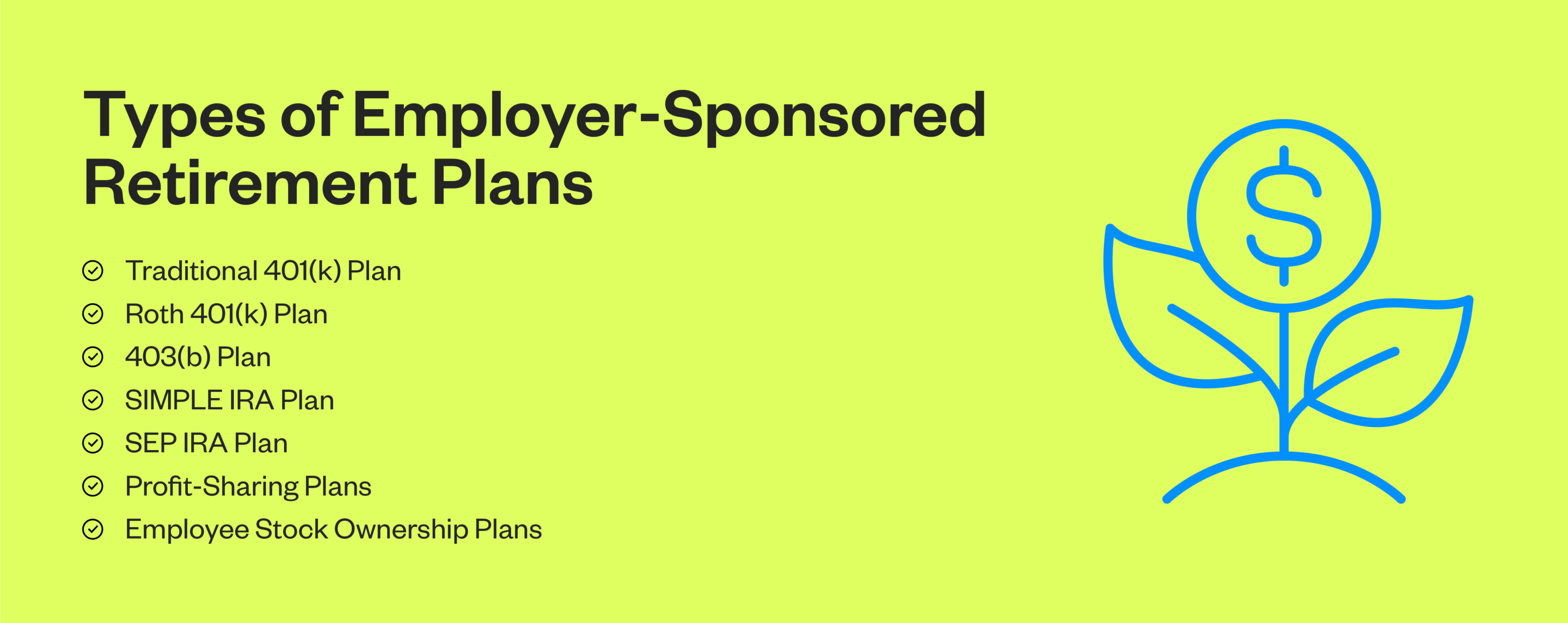

How to Save for Retirement
Retirement symbolizes a time of rest and enjoyment after many decades of hard work. Yet, the golden years of retirement aren't guaranteed to be worry-free unless you prepare for them. As many are approaching retirement, understanding how to save and estimate retirement income needs becomes a cornerstone of planning.
The retirement saving tips in this guide can direct you toward more informed choices and effective strategies to help you build a robust retirement nest egg.

1. Start Saving Early
The earlier you start saving, the more time your money has to grow, and the easier it can become to achieve a comfortable retirement. In addition to this, building a better budget early on can help allocate funds effectively for retirement. Starting early also allows you to take advantage of compound interest, which is the interest you earn on your original investment and the interest you continue to accumulate over time. If you start saving in your 20s, even small, consistent contributions can amount to a sizable return by retirement.
At California Credit Union. we offer several different savings accounts that an help you get started today.
2. Set Retirement Goals
By setting tangible retirement goals and calculating the retirement income you can assess how much you'll need and strategize accordingly. Factor in aspects like the age at which you want to retire, the lifestyle you want to live and unforeseen expenses like healthcare. Also, consider the effects of inflation. A dollar today won't have the same purchasing power in 40 years.
3. Automate Your Savings
A key strategy in how to save for retirement is to automate your savings. This entails setting up regular, automatic transfers from your paycheck or primary bank account into a separate savings or investment account dedicated to retirement. By doing this, you treat your savings as a non-negotiable expense like rent or your mortgage payment. Utilizing tools like a retirement saving calculator or a retirement plan contribution calculator can help in assessing how much you need to set aside monthly.
4. Contribute to Your Employer-Sponsored Retirement Account
Employer-sponsored retirement accounts like 401(k)s are powerful tools when it comes to retirement planning. Contributions are typically made with pre-tax dollars, which means immediate tax savings. Many employer plans also allow you to automatically increase the amount you contribute every year. Additionally, the funds in these accounts grow tax-free until withdrawal, allowing for more robust growth as the money that would have been paid in taxes remains in the account, allowing you to take advantage of compound interest.

5. Take Advantage of Your Employer's Match
One of the most enticing features of employer-sponsored retirement plans is the employer match. In this setup, for every dollar you contribute up to a certain percentage of your salary, your employer might match that amount, doubling the overall contribution. Not maximizing this match means leaving money on the table. If your employer matches 50% of contributions up to 6% of your salary, you should contribute at least that 6% to capture the full match and accelerate the growth of your savings.
6. Diversify Your Investments
By diversifying your investments into various assets like stocks, bonds, EFTs and real estate, you can protect your savings from unfavorable shifts in a single sector. In other words, if one investment loses value, others might perform well to offset the potential losses. This diversification provides a balance for consistent growth over time. Utilizing a wealth management advisor can help with the management of your portfolio.
7. Open an IRA
Individual Retirement Accounts (IRA) are tax-advantaged accounts that you can open outside of your employer-sponsored plans, offering another savings vehicle. There are two primary types: Traditional IRAs and Roth IRAs.
With a Traditional IRA, contributions may be tax-deductible for the year they’re made, and the investments grow tax-deferred until withdrawal in retirement. On the other hand, Roth IRAs are funded with post-tax dollars, meaning withdrawals in retirement are tax-free. You can learn more about both types of accounts here.
8. Make Catch-Up Contributions
Once you reach the age of 50, the IRS allows you to contribute extra money to certain retirement accounts over and above the standard contribution limits, such as 401(k)s and IRAs. For many, this strategy is a valuable opportunity to bolster retirement funds, especially if they start saving later in life. It's a proactive approach to ensure a more financially secure retirement.
9. Pay Down Debt
Every dollar spent on interest is a dollar not invested toward the future. By focusing on paying off high-interest debts, you can free up more money to allocate toward retirement savings and reduce the overall financial burden. Having no debt obligations means more flexibility in your retirement budget, allowing for additional leisure activities and travel.
10. Avoid Early Withdrawals
Early withdrawals from retirement accounts, such as 401(k)s and IRAs, are subject to a 10% penalty tax, meaning you'll have to pay regular income tax and a penalty. Even if it may seem like an insignificant sum now, that money would have had the potential to compound and grow over time.
Key Takeaways: How to Save for Retirement
By starting early, setting clear goals, diversifying your investments and leveraging different retirement accounts, you can create a roadmap for a financially secure retirement.
With our suite of retirement savings vehicles, financial counseling and resources, CCU ensures you're well-equipped to make informed decisions every step of the way. Each of our members receives personalized services designed to help them find the right savings products for their unique situations. Take advantage of the benefits of a credit union and become a member today to start growing your retirement savings.





